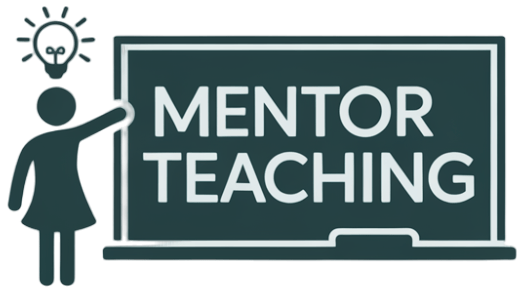When it comes to lesson planning, setting standards is crucial for ensuring quality education and student success. Standards act as milestones that define what students should achieve at each grade level and provide a framework for instruction. However, determining the appropriate number of standards to include in a lesson plan can be challenging.
Many educators wonder, “How many standards should be in a lesson plan?” The answer depends on various factors such as the subject, grade level, and instructional time available. It is important to strike a balance between covering the necessary content and allowing for a deep understanding of the concepts.
While it may be tempting to include numerous standards to ensure comprehensive coverage, it is essential to consider the complexity of the standards and the needs of the students. Overwhelming students with an excessive number of standards can hinder their ability to truly grasp the material.
In this article, we will explore the optimal standards to include in a lesson plan and provide strategies for aligning lesson plans with these standards. By understanding how to determine and set standards effectively, educators can enhance their instructional practices and promote meaningful learning experiences for their students.
Understanding the Difference Between Standards and Learning Objectives
Standards and learning objectives play distinct roles in the field of education. While both are vital components of effective lesson planning, they have different focuses and purposes.
Standards serve as benchmarks for academic progress, outlining the content and skills that students should learn by the end of a school year. They provide a broad framework that guides instructional planning and curriculum development. Standards are designed to ensure that students acquire the necessary knowledge and abilities to meet academic expectations in a particular subject or grade level. They act as milestones for measuring students’ progress and success.
Learning objectives, on the other hand, define the specific knowledge and skills that students should acquire in a single lesson or instructional unit. They offer a more focused and detailed direction for instruction, highlighting what students will be able to do or understand by the end of a lesson. Learning objectives help educators translate the broader standards into actionable and measurable learning outcomes. By setting clear objectives, teachers can effectively plan instruction and evaluate student progress.
In summary, standards provide a broader framework for education, encompassing what students should know and be able to do by the end of a school year, while learning objectives define specific goals for individual lessons. Both standards and learning objectives are critical for effective instructional planning, as they ensure that instruction is aligned with academic expectations and promotes student learning outcomes.
Key Differences between Standards and Learning Objectives:
- Standards outline content and skills for an entire year, while learning objectives focus on specific lesson outcomes.
- Standards act as benchmarks for academic progress, while learning objectives guide instruction and assessment at the lesson level.
- Standards are broad, while learning objectives are more specific and measurable.
Determining the Optimal Number of Standards in a Lesson Plan
The number of standards to include in a lesson plan can vary depending on various factors such as the subject, grade level, and available instructional time. It is crucial to strike a balance between covering the necessary content and allowing for depth of understanding. To determine the optimal number of standards in a lesson plan, educators should consider the complexity of the standards, the pace of instruction, and the needs of their students.
Factors to Consider
When deciding on the number of standards to include in a lesson plan, educators should consider the following:
- Complexity of the standards: Some standards may be more complex and require more time for thorough understanding and mastery. Educators should take into account the depth of knowledge needed to meet each standard and allocate sufficient instructional time accordingly.
- Pace of instruction: The pace at which teachers cover content and deliver instruction can impact the number of standards that can be effectively addressed. It is important to ensure that students have enough time to engage with and comprehend each standard before moving on to the next.
- Needs of students: Different students may require varying levels of support and practice to achieve the desired learning outcomes. Educators should consider the diverse needs of their students and tailor the number of standards accordingly, ensuring that each student has an opportunity to succeed.
Guidelines and Best Practices
While there is no one-size-fits-all approach to determining the optimal number of standards in a lesson plan, educators can benefit from following some guidelines and best practices:
- Refer to curriculum guidelines: Consult official curriculum guidelines, such as state or district standards, for specific recommendations regarding the number of standards to cover within a given timeframe.
- Prioritize essential standards: Identify the most critical standards that align with the learning objectives and prioritize those in the lesson plan. Focusing on a smaller set of standards allows for better depth of understanding and mastery.
- Consider spiraling curriculum: Employ a spiraling curriculum approach, where standards are revisited and reinforced over time. This allows for a balanced distribution of standards across multiple lesson plans.
By considering the complexity of standards, the pace of instruction, and the needs of students, educators can determine the optimal number of standards to include in a lesson plan. Following guidelines and best practices provides valuable support in making informed decisions about which standards to prioritize and how many to incorporate into each lesson plan, ultimately enhancing the learning experience for students.
Strategies for Aligning Lesson Plans with Standards
Aligning lesson plans with standards is essential for effective instruction and promoting student achievement. By ensuring that instruction is grounded in best practices and based on research, educators can create a strong foundation for student learning. Here are some strategies for aligning lesson plans with standards:
- Thoroughly Review Official Standards: Start by carefully reviewing the official standards for your grade level and subject area. This review will give you a clear understanding of the expectations and content students should learn.
- Identify Gaps: Compare your existing lesson plans with the standards and identify any gaps. Look for areas where you may need to modify or supplement your lessons to ensure alignment.
- Modify Lesson Plans: Once you have identified the gaps, modify your lesson plans to align them with the standards. Make necessary adjustments to the content, activities, and assessments to ensure that the objectives of your lessons are in line with the standards.
- Monitor Student Progress: Continuously monitor student progress and performance to fine-tune the alignment of your lesson plans with the standards. This will help you identify any areas where students may be struggling and make necessary adjustments to improve their learning outcomes.
By following these strategies, educators can effectively align their lesson plans with standards, resulting in quality instruction that meets the needs of all students.
Aligning lesson plans with curriculum standards is a vital aspect of instructional planning. It ensures that educators provide high-quality education that prepares students for success. Effective use of standards in lesson plans improves student learning outcomes and promotes academic achievement.
Strategies for Incorporating Standards into Lesson Plans
Incorporating standards into lesson plans requires thoughtful planning and strategic decision-making. Educators can use various strategies to integrate standards seamlessly into their instruction.
Focusing on Unit Objectives
One effective approach is to shift the focus from individual lesson objectives to unit objectives. By aligning lesson plans with overarching unit objectives, educators create a more cohesive and connected learning experience for students. This allows for a more flexible and organic approach to learning, where students are encouraged to master skills and concepts as they progress through the unit. By incorporating standards-aligned unit objectives, educators can ensure that students are exposed to a comprehensive and well-rounded curriculum.
Building Inquiry-Based Learning Opportunities
Inquiry-based learning is another powerful strategy for integrating standards into lesson plans. This approach emphasizes student-driven exploration, critical thinking, and problem-solving. By incorporating inquiry-based activities and projects into their lessons, educators not only align their instruction with standards but also create opportunities for deep learning. Students engage in active investigations, conduct research, and make connections between the content and real-world scenarios. This approach not only enhances understanding but also fosters curiosity and a love for learning.
Utilizing Cross-Curricular Connections
Integrating standards across multiple subject areas can enhance the interdisciplinary nature of instruction. Educators can identify connections between different standards and subject areas to create meaningful learning experiences. For example, a science lesson on environmental conservation can incorporate standards from both science and social studies, allowing students to explore the scientific concepts while also understanding the societal impact. By integrating standards in this way, educators provide students with a more holistic and interconnected view of knowledge.
Collaborative Planning and Professional Development
Collaborative planning and professional development sessions provide opportunities for educators to share best practices and align their instruction with standards. By working together, educators can brainstorm ideas, review lesson plans, and provide feedback to enhance standards-based instruction. Additionally, attending workshops, conferences, and webinars focused on effective lesson planning with standards can further develop educators’ skills and knowledge in incorporating standards into their teaching practices.
| Strategies | Benefits |
|---|---|
| Focusing on Unit Objectives |
|
| Building Inquiry-Based Learning Opportunities |
|
| Utilizing Cross-Curricular Connections |
|
| Collaborative Planning and Professional Development |
|
Conclusion
Optimally determining the number of standards to include in a lesson plan is a critical factor in effective instructional planning. Differentiating between standards and learning objectives is essential in ensuring a cohesive and comprehensive approach to guiding instruction. By aligning lesson plans with standards, educators can significantly enhance student learning outcomes and promote academic success.
Strategies such as reviewing the standards, identifying gaps, and continuously monitoring student progress play a crucial role in facilitating the alignment process. These actions enable educators to make informed decisions about the content and skills they prioritize in their lesson plans, ensuring that instruction is in line with the expected standards. Additionally, incorporating standards strategically into lesson plans, and focusing on unit objectives, can further optimize instructional practices.
Ultimately, the effective use of standards in lesson plans contributes to the overall quality of education and supports student achievement. By integrating optimal standards into their instructional planning, educators create a foundation for engaging, meaningful, and targeted instruction that empowers students to reach their full potential.




